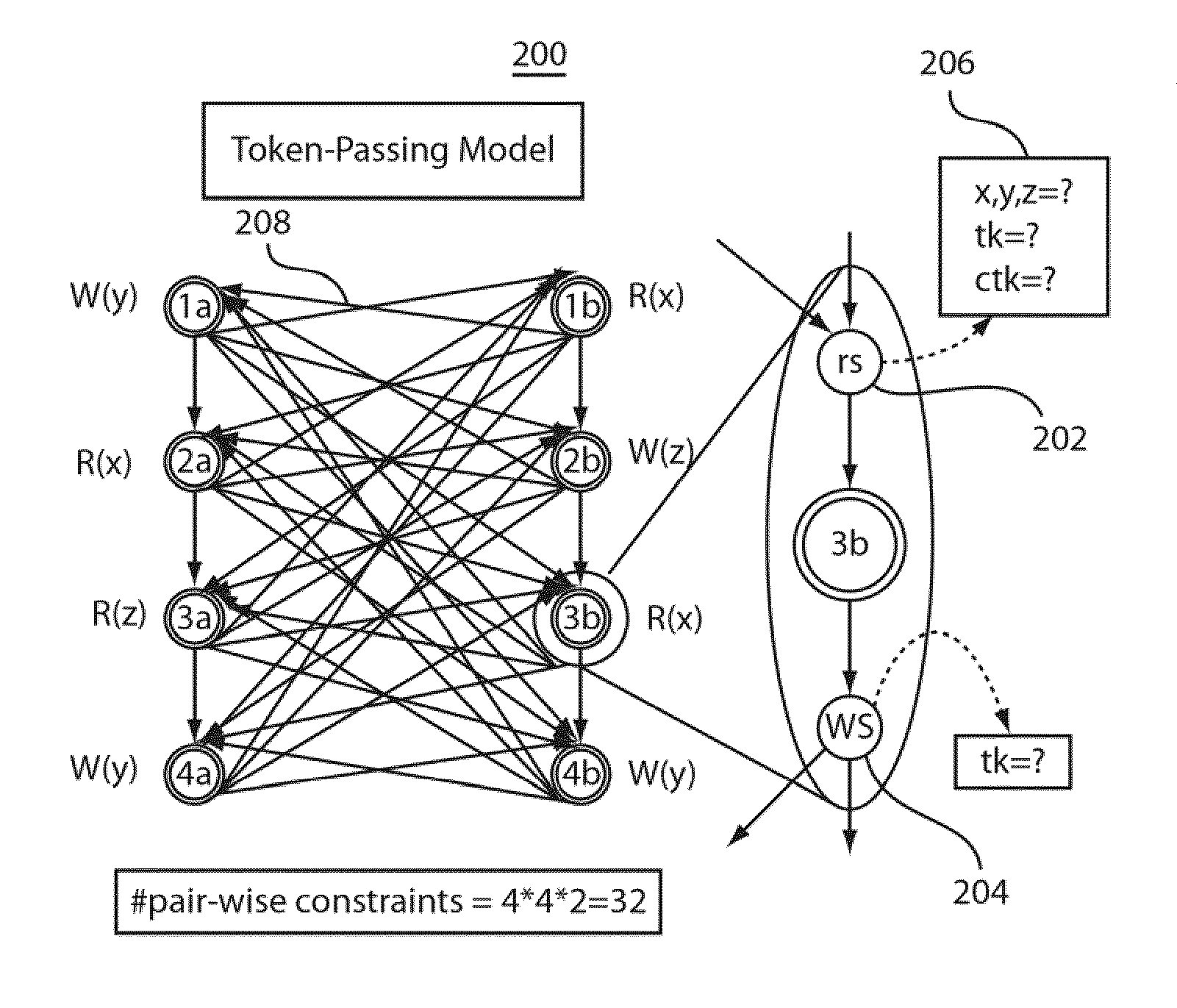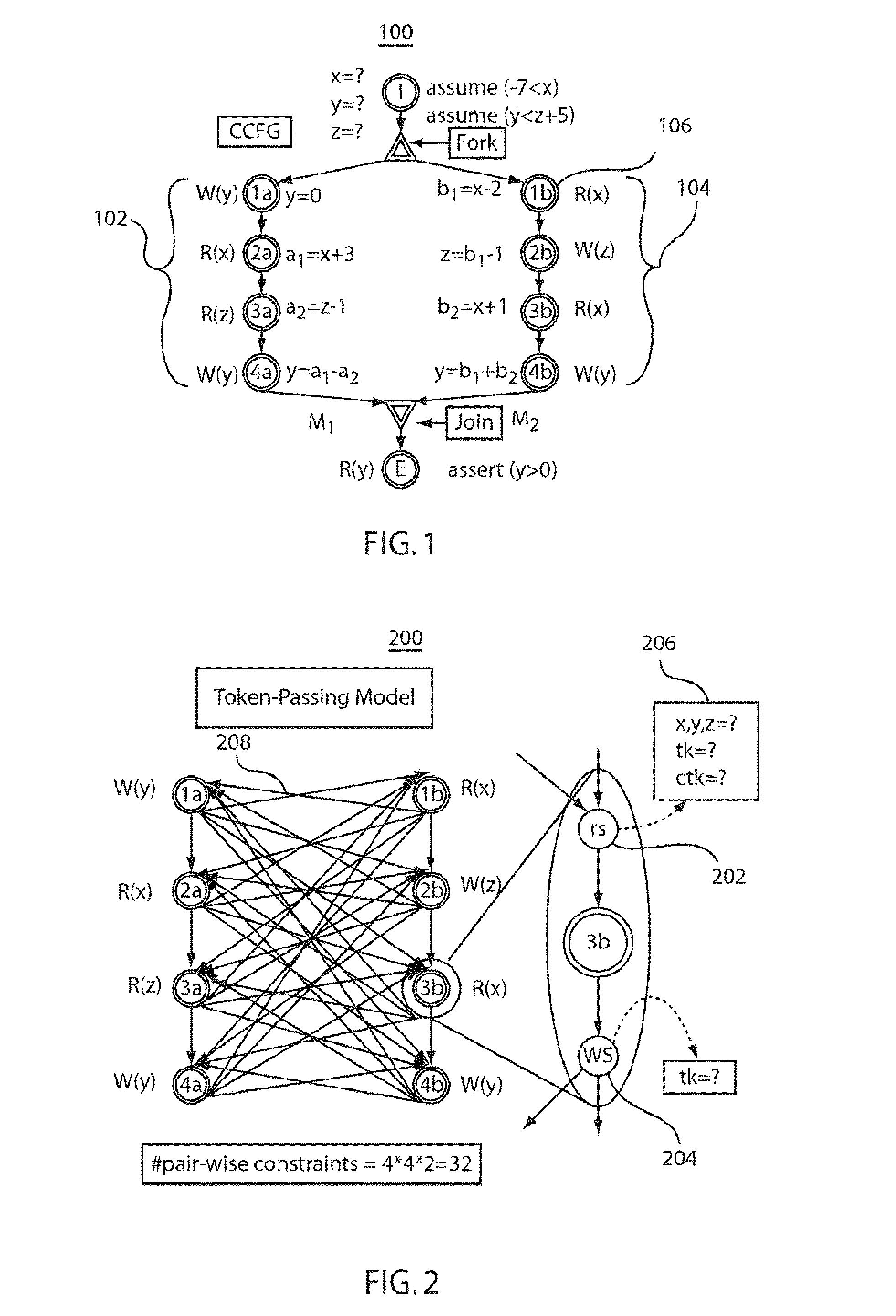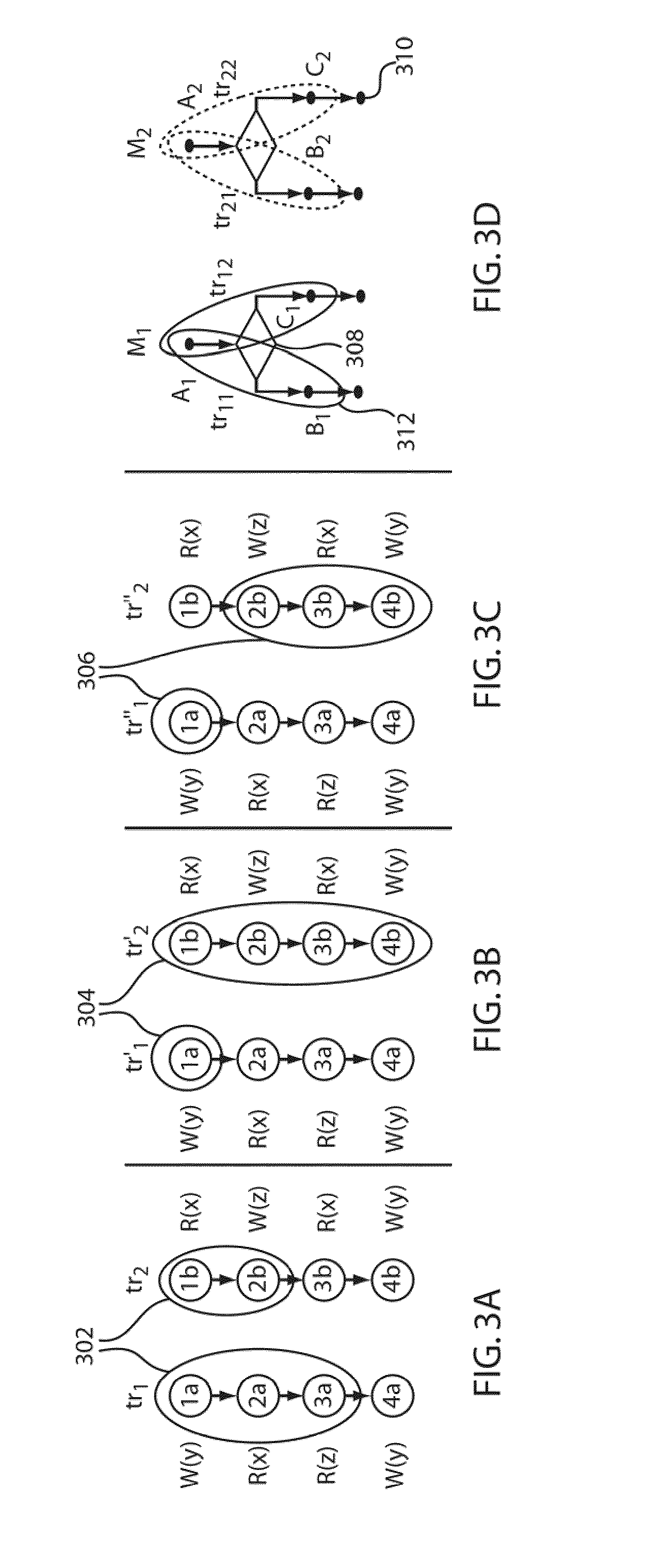Methods and systems for reducing verification conditions for concurrent programs using mutually atomic transactions
a technology of mutually atomic transactions and verification conditions, applied in the direction of multi-threaded program verification, program control, instruments, etc., can solve the problems of incomplete methods, difficult verification of multi-threaded programs, and inability to verify and achieve the effect of verifying the correctness of concurrent systems
- Summary
- Abstract
- Description
- Claims
- Application Information
AI Technical Summary
Benefits of technology
Problems solved by technology
Method used
Image
Examples
Embodiment Construction
[0024]Verification of concurrent programs entails exploration of a minimum set of representative thread interleaving (i.e., traces) that are equivalent to all possible interleaving to guarantee correctness. New symbolic methods are described herein below that are based on partial order reduction and that generate reduced verification conditions for a multi-threaded concurrent system with shared variables and locks. The methods guarantee correctness by removing constraints that correspond to redundant interleaving. The methods incorporate some aspects of a token-based approach, discussed further herein below, which generates verification conditions directly without an explicit scheduler. However, unlike the token-based approach, concurrency constraints are not added between all pair-wise global accesses. Thus, in accordance with aspects of the present invention, redundant interleavings can be eliminated.
[0025]Exemplary features of the present invention include the notion of Mutually ...
PUM
 Login to View More
Login to View More Abstract
Description
Claims
Application Information
 Login to View More
Login to View More - R&D
- Intellectual Property
- Life Sciences
- Materials
- Tech Scout
- Unparalleled Data Quality
- Higher Quality Content
- 60% Fewer Hallucinations
Browse by: Latest US Patents, China's latest patents, Technical Efficacy Thesaurus, Application Domain, Technology Topic, Popular Technical Reports.
© 2025 PatSnap. All rights reserved.Legal|Privacy policy|Modern Slavery Act Transparency Statement|Sitemap|About US| Contact US: help@patsnap.com



